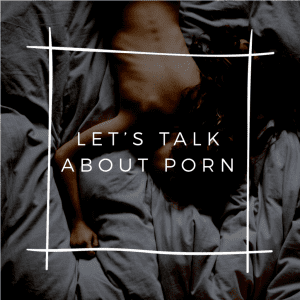Let’s Talk About Porn
We don’t talk enough about uncomfortable topics, like pornography, which can quickly creep into our kids’ lives. I use the word creep very intentionally. I believe pornographic images slowly and dangerously sneak into our kids’ world. The average age most boys first see porn is between 11-13 (my son’s age), and 14 for girls. So I’m going to share some facts, and start the discussion on what we can do to protect our kids’ hearts and minds.
Sexually explicit content is everywhere, and not just on porn sites (Pornhub, the most popular pornography site, draws 80 million visitors a day). Anyone with a device (computer, iPad, smartphone) has easy access to sexually explicit material – intentionally viewing or accidentally stumbling upon it. Accidental exposure is something we need to be aware of and discuss with our kids.
Of the kids who say they’ve seen porn, 66% report they viewed this material accidentally while attempting to access age appropriate programs.
They are naturally curious and what our kids see can leave a lasting impression. I remember the first time I saw porn – it was a gross and upsetting image in a magazine that someone found at my brother’s baseball game.
Even if your child doesn’t have a device – or one that is tightly monitored – think about their exposure to sexual content in movies, TV, and music. It’s everywhere and we can teach our kids what is healthy and what isn’t. We can have age appropriate discussions that emphasize: our bodies are sacred; and sex is serious and has major consequences both emotionally and physically. For older kids, let them know watching porn is illegal if under 18; and receiving or sending consensual naked photos, even to your boyfriend or girlfriend, can be against the law if the person in the photo is a minor.
The images (including memes and GIFs) on Instagram and Snapchat are most concerning to me. What I consider “soft” porn, and can easily be dismissed by our kids as “no big deal.” Last weekend, during a party, the adults were outside on the patio and all the kids were upstairs. I went to check on the kids and saw one of my son’s friends looking at a very racy picture on Instagram (a large, tanned, oiled female butt sticking out wearing a g-string). I couldn’t get the image out of my head (so I can only imagine the impact it had on him). I told him the picture wasn’t healthy for his heart or mind.
At a very basic level, when girls and boys see large penises and huge breasts, do they think this is normal? Does it make them feel abnormal or ashamed that they don’t look like this? How does it shape their view of sex, relationships and expectations?
When our kids see porn, it’s critical we remove the shame, guilt and confusion they might feel from stumbling upon it. In a world where our kids experience so much pressure; where depression and isolation are a reality; and suicide rates are way too high, I pray for a culture where we can discuss anything, learn from it and feel the freedom of honesty, acceptance and purity.
According to research from Indiana University, twice as many teenagers watched porn as their parents assumed. In fact, parents underestimate what kinds of porn their kids see by as much as ten times. This shows that our awareness and initiating discussions about porn is critical. By talking to each other and our kids about it, together we can analyze its messages and protect ourselves. In particular, here are some recommendations from Psychology Today:
- Know what your children are watching, playing and listening to because everything is a teachable moment. This is exhausting and never ending, I fully understand that. Yet it is so worthwhile.
- Set and enforce limits around screen time. It’s much easier to set this rule and expectation now than to implement it during the middle school years. Also let your child know you’ll be monitoring their social media activity.
- Use filters and parental controls.
- Talk about your family’s values and expectations regarding sex and relationships.
- Model healthy, respectful relationships and self-worth.
Most importantly, know that talking to our kids openly and honestly about hard topics is lifelong relationship building. We don’t have to have all the answers, but are present and available to protect the most precious beings in our care.












Thank you for this! I don’t understand why porn is so accepted in our culture. It’s so nice to see other parents think like I do. I agree that some things I stumble across on places like Instagram seem like soft porn, and pretty young kids use these apps. It’s alarming for sure. I wish more people would understand how damaging and dangerous it is and try to protect our kids more.